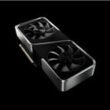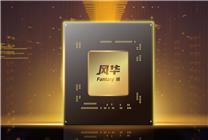AMD Ryzen Processor Radiator Update: Changes and Implications
According to a recent announcement by Kuai Technology on August 29, AMD has decided to make notable changes to the radiator systems included with their Ryzen processors. These modifications involve removing or adjusting specific radiator models, impacting several Ryzen series processors.
Radiator Changes Explained
AMD has officially stated that the SR2a and SR4 radiator models are being phased out, as they enter the end-of-life (EOL) stage. Consequently, some Ryzen 8000G, 7000, and 5000 series processors will transition to using the SR1 radiator, replacing the former SR4 model. This change is scheduled to be implemented starting August 1, 2025.
Impact on Boxed Processors
For certain processors, like the Ryzen 7 7700 and Ryzen 9 7900, the built-in Ghost Prism radiator will no longer be included. Users purchasing these models will need to acquire a radiator separately.
Additionally, for models such as the Ryzen 7 8700G and Ryzen 5 3400G, the current Ghost Prism radiator will be substituted with a more compact Ghost Spire radiator. This new version will lack the RGB lighting feature, streamlining the design.
Pricing Implications
Despite these hardware changes, the prices for the affected processors are expected to remain stable, ensuring there is no financial impact on consumers from the radiator adjustments.
The Ghost Series Overview
The Ghost Series radiators have been a part of AMD’s lineup since the second-generation Ryzen 2000 series was introduced in 2018. This series includes four models: Max, Prism, Spire, and Stealth, designed for 65W and 95W models. Typically, X-series models do not include a radiator, highlighting AMD’s strategy of tailored cooling solutions according to specific processor requirements.
Conclusion
AMD’s adjustments to the radiator options reflect a focus on streamlining and updating their product offerings. While users of certain processors will need to purchase separate radiators, the overall pricing remains unaffected, maintaining the value proposition for AMD’s Ryzen series. These changes signify AMD’s ongoing commitment to evolving their hardware to meet both performance and consumer expectations.









